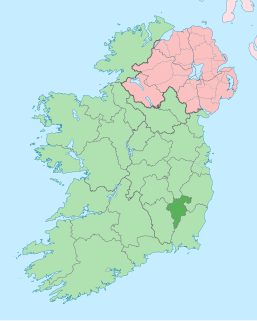This is a list of people who have served as Lord Lieutenant of County Tipperary between 1831 and 1922.
This is a list of people who have served as Custos Rotulorum of Nottinghamshire.
This is a list of people who have served as Custos Rotulorum of Anglesey.
This is a list of people who have served as Custos Rotulorum of Montgomeryshire.

Richard Newport, 2nd Earl of Bradford PC, styled The Honourable from 1651 to 1694 and subsequently Viscount Newport until 1708, was an English peer and Whig politician.

Richard Vaughan, 2nd Earl of Carbery KB, PC, styled The Honourable from 1621 until 1628 and then Lord Vaughan until 1634, was a Welsh soldier, peer and politician.
Maurice FitzGerald, 18th Knight of Kerry was an hereditary knight and an Irish Whig politician.
There have been four baronetcies created for persons with the surname Butler; two in the Baronetage of Ireland and two in the Baronetage of the United Kingdom. As of 2014 two of the creations are extant.
Sir Richard Butler, 7th Baronet was an Anglo-Irish politician.
The High Sheriff of Carlow was the British Crown's judicial representative in County Carlow, Ireland from the 14th century until 1922, when the office was abolished in the new Free State and replaced by the office of Carlow County Sheriff. The sheriff had judicial, electoral, ceremonial and administrative functions and executed High Court Writs. In 1908, an Order in Council made the Lord-Lieutenant the Sovereign's prime representative in a county and reduced the High Sheriff's precedence. However the sheriff retained his responsibilities for the preservation of law and order in the county. The usual procedure for appointing the sheriff from 1660 onwards was that three persons were nominated at the beginning of each year from the county and the Lord Lieutenant then appointed his choice as High Sheriff for the remainder of the year. Often the other nominees were appointed as under-sheriffs. Sometimes a sheriff did not fulfil his entire term through death or other event and another sheriff was then appointed for the remainder of the year. The dates given hereunder are the dates of appointment. All addresses are in County Carlow unless stated otherwise.
The Custos Rotulorum of Donegal was the highest civil officer in County Donegal.
The Custos Rotulorum of Leitrim was the highest civil officer in County Leitrim.
The Custos Rotulorum of County Wexford was the highest civil officer in County Wexford.
The Custos Rotulorum of Sligo was the highest civil officer in County Sligo during the British administration of the country..
The Custos Rotulorum of Louth was the highest civil officer in County Louth.
Custos rotulorum is the keeper of a county's records and, by virtue of that office, the highest civil officer in the county.
The Custos Rotulorum of Meath was the highest civil officer in County Meath. The position was later combined with that of Lord Lieutenant of Meath.
The Custos Rotulorum of County Cork was the highest civil officer in County Cork, Ireland. The position was later combined with that of Lord Lieutenant of Cork.
The Custos Rotulorum of Tyrone was the highest civil officer in County Tyrone, Ireland. The position was later combined with that of Lord Lieutenant of Tyrone.


